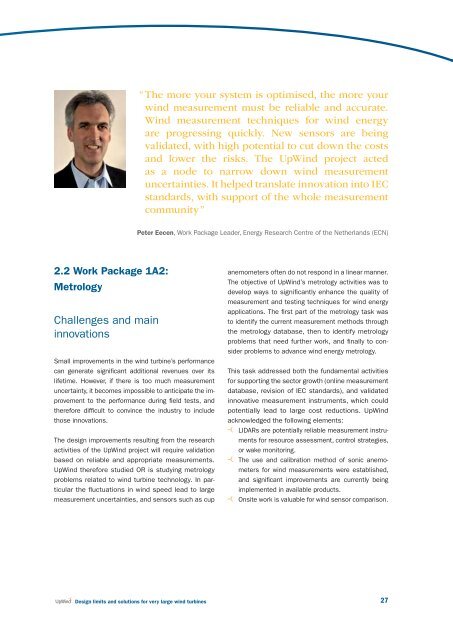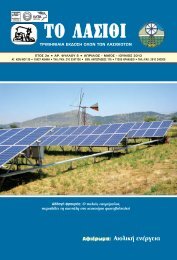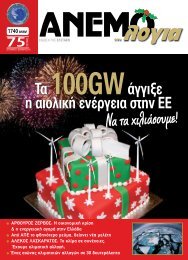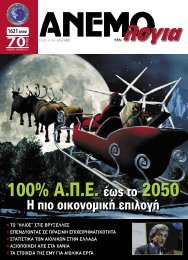Design limits and solutions for very large wind turbines
Design limits and solutions for very large wind turbines
Design limits and solutions for very large wind turbines
Create successful ePaper yourself
Turn your PDF publications into a flip-book with our unique Google optimized e-Paper software.
“ The more your system is optimised, the more your<br />
<strong>wind</strong> measurement must be reliable <strong>and</strong> accurate.<br />
Wind measurement techniques <strong>for</strong> <strong>wind</strong> energy<br />
are progressing quickly. New sensors are being<br />
validated, with high potential to cut down the costs<br />
<strong>and</strong> lower the risks. The UpWind project acted<br />
as a node to narrow down <strong>wind</strong> measurement<br />
uncertainties. It helped translate innovation into IEC<br />
st<strong>and</strong>ards, with support of the whole measurement<br />
community ”<br />
Peter Eecen, Work Package Leader, Energy Research Centre of the Netherl<strong>and</strong>s (ECN)<br />
2.2 Work Package 1A2:<br />
Metrology<br />
Challenges <strong>and</strong> main<br />
innovations<br />
Small improvements in the <strong>wind</strong> turbine’s per<strong>for</strong>mance<br />
can generate significant additional revenues over its<br />
lifetime. However, if there is too much measurement<br />
uncertainty, it becomes impossible to anticipate the improvement<br />
to the per<strong>for</strong>mance during field tests, <strong>and</strong><br />
there<strong>for</strong>e difficult to convince the industry to include<br />
those innovations.<br />
The design improvements resulting from the research<br />
activities of the UpWind project will require validation<br />
based on reliable <strong>and</strong> appropriate measurements.<br />
UpWind there<strong>for</strong>e studied OR is studying metrology<br />
problems related to <strong>wind</strong> turbine technology. In particular<br />
the fluctuations in <strong>wind</strong> speed lead to <strong>large</strong><br />
measurement uncertainties, <strong>and</strong> sensors such as cup<br />
anemometers often do not respond in a linear manner.<br />
The objective of UpWind’s metrology activities was to<br />
develop ways to signifi cantly enhance the quality of<br />
measurement <strong>and</strong> testing techniques <strong>for</strong> <strong>wind</strong> energy<br />
applications. The first part of the metrology task was<br />
to identify the current measurement methods through<br />
the metrology database, then to identify metrology<br />
problems that need further work, <strong>and</strong> finally to consider<br />
problems to advance <strong>wind</strong> energy metrology.<br />
This task addressed both the fundamental activities<br />
<strong>for</strong> supporting the sector growth (online measurement<br />
database, revision of IEC st<strong>and</strong>ards), <strong>and</strong> validated<br />
innovative measurement instruments, which could<br />
potentially lead to <strong>large</strong> cost reductions. UpWind<br />
acknowledged the following elements:<br />
LIDARs are potentially reliable measurement instruments<br />
<strong>for</strong> resource assessment, control strategies,<br />
or wake monitoring.<br />
The use <strong>and</strong> calibration method of sonic anemometers<br />
<strong>for</strong> <strong>wind</strong> measurements were established,<br />
<strong>and</strong> significant improvements are currently being<br />
implemented in available products.<br />
Onsite work is valuable <strong>for</strong> <strong>wind</strong> sensor comparison.<br />
<strong>Design</strong> <strong>limits</strong> <strong>and</strong> <strong>solutions</strong> <strong>for</strong> <strong>very</strong> <strong>large</strong> <strong>wind</strong> <strong>turbines</strong><br />
27









